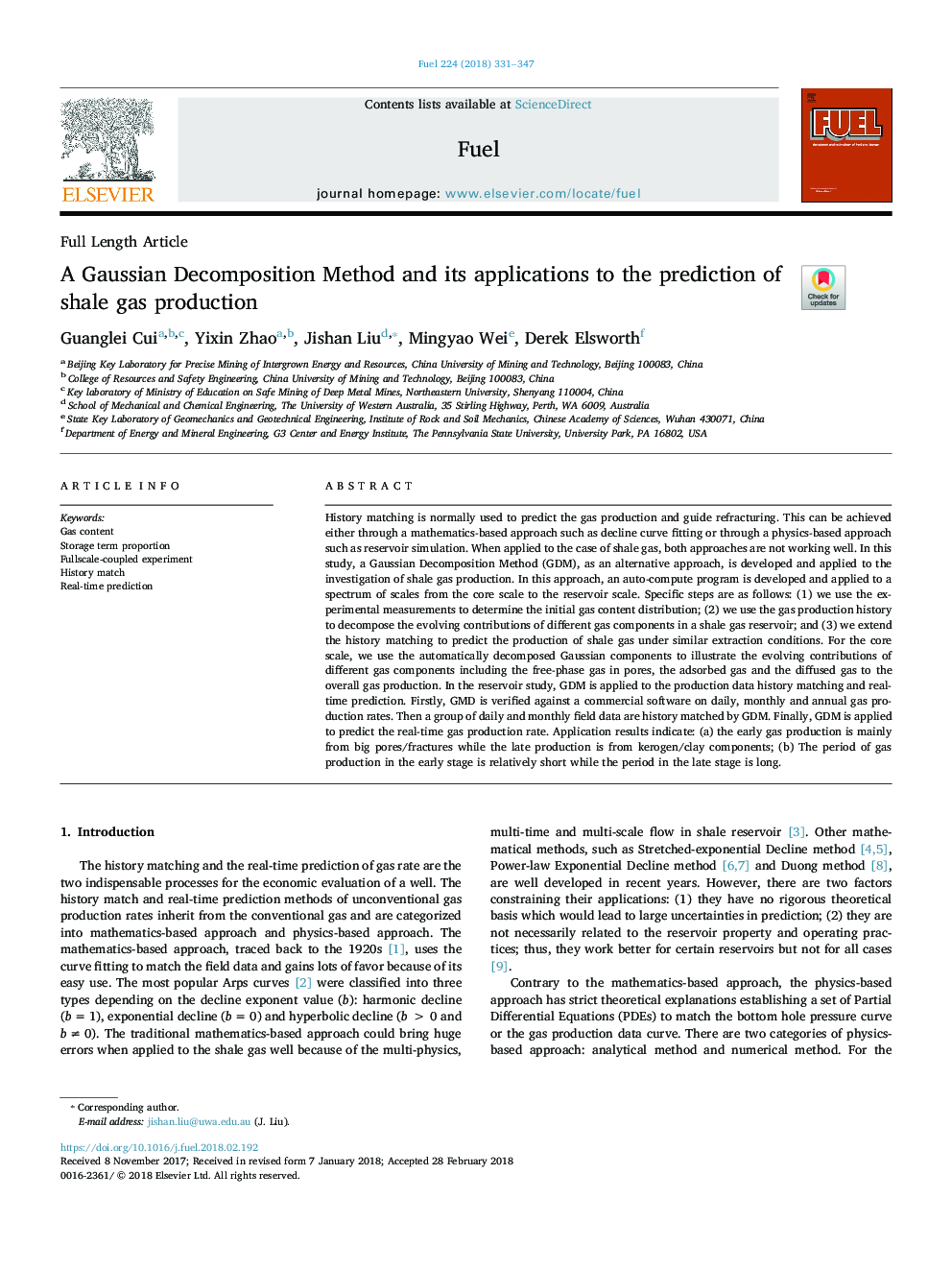| کد مقاله | کد نشریه | سال انتشار | مقاله انگلیسی | نسخه تمام متن |
|---|---|---|---|---|
| 6631154 | 1424940 | 2018 | 17 صفحه PDF | دانلود رایگان |
عنوان انگلیسی مقاله ISI
A Gaussian Decomposition Method and its applications to the prediction of shale gas production
ترجمه فارسی عنوان
یک روش تجزیه گاوسی و کاربرد آن برای پیش بینی تولید گاز شیل
دانلود مقاله + سفارش ترجمه
دانلود مقاله ISI انگلیسی
رایگان برای ایرانیان
کلمات کلیدی
محتوای گاز، مدت نگهداری نسبت، آزمایش کامل همراه تاریخ مسابقه، پیش بینی زمان واقعی،
موضوعات مرتبط
مهندسی و علوم پایه
مهندسی شیمی
مهندسی شیمی (عمومی)
چکیده انگلیسی
History matching is normally used to predict the gas production and guide refracturing. This can be achieved either through a mathematics-based approach such as decline curve fitting or through a physics-based approach such as reservoir simulation. When applied to the case of shale gas, both approaches are not working well. In this study, a Gaussian Decomposition Method (GDM), as an alternative approach, is developed and applied to the investigation of shale gas production. In this approach, an auto-compute program is developed and applied to a spectrum of scales from the core scale to the reservoir scale. Specific steps are as follows: (1) we use the experimental measurements to determine the initial gas content distribution; (2) we use the gas production history to decompose the evolving contributions of different gas components in a shale gas reservoir; and (3) we extend the history matching to predict the production of shale gas under similar extraction conditions. For the core scale, we use the automatically decomposed Gaussian components to illustrate the evolving contributions of different gas components including the free-phase gas in pores, the adsorbed gas and the diffused gas to the overall gas production. In the reservoir study, GDM is applied to the production data history matching and real-time prediction. Firstly, GMD is verified against a commercial software on daily, monthly and annual gas production rates. Then a group of daily and monthly field data are history matched by GDM. Finally, GDM is applied to predict the real-time gas production rate. Application results indicate: (a) the early gas production is mainly from big pores/fractures while the late production is from kerogen/clay components; (b) The period of gas production in the early stage is relatively short while the period in the late stage is long.
ناشر
Database: Elsevier - ScienceDirect (ساینس دایرکت)
Journal: Fuel - Volume 224, 15 July 2018, Pages 331-347
Journal: Fuel - Volume 224, 15 July 2018, Pages 331-347
نویسندگان
Guanglei Cui, Yixin Zhao, Jishan Liu, Mingyao Wei, Derek Elsworth,
